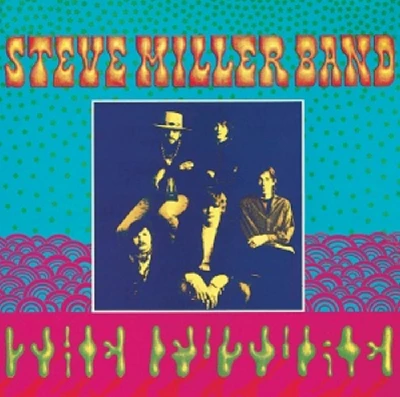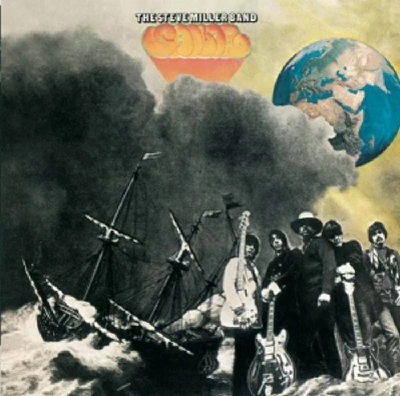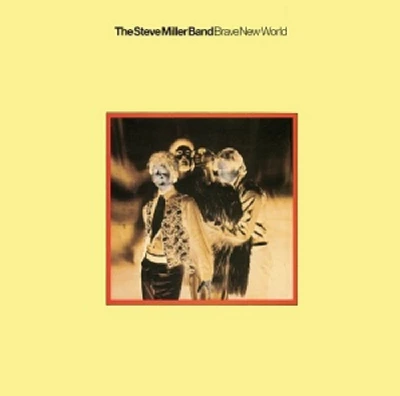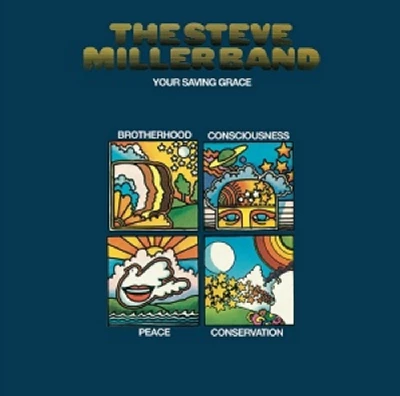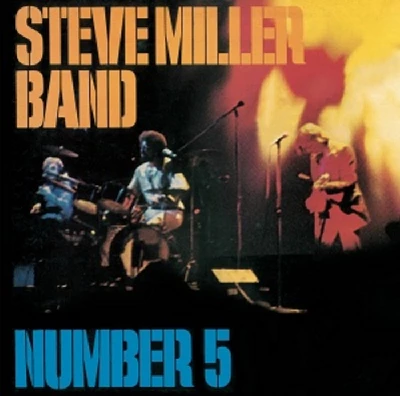published: 29 /
10 /
2012

Lisa Torem assesses the late 60's and early 70's early career of the Steve Miller Band, who have just had their first five albums remastered
Article
The popular Steve Miller Band, which has sold more than 30 million records during their 40-year existence, will now re-issue their first five albums, which were recorded between 1968-1970. These updated recordings are re-mastered and packaged with contemporary liner notes, new artwork and rare photos.
‘Children of the Future' (1968)
The first of the set, ‘Children of the Future’, which was produced by Glyn Johns, starts off with the wildly psychedelic theme song of the same name, which begins with a bang and leads to an innocent pop chorus. At this point in history the band was comprised of Steve Miller (guitar and vocals), Boz Scaggs (guitar and vocals), Lonnie Turner (bass), Tim Davis (drums) and Jim Peterman (keyboards).
‘Pushed Me to It’ and ‘You’ve Got the Point’ are reminiscent of Spencer Davis. ‘In My First Mind,’ is whipped into a frenzy by a blazing organ.
‘The Beauty of Time’ is thick with ambient sounds, which bleed into a 12-bar blues set against train sounds. The band seems to favour incorporating such experimental sounds in a number of their early tracks. The first half of the album seems a bit unfocused until the dreamy, jazz inflected blues of ‘Baby’s Calling Me Home’ makes a strong statement.
On ‘Steppin’ Stone,’ and ‘Roll With It,’ exciting vocals and a counter-culture vibe provide ample distinction. ‘Junior Saw It Happen,’ which is all about jamming, is a cyclone of sonic adventure.
The album also hits its mark with the blazing blues harp of ‘Fannie Mae’ and ‘Sittin’ in Circles’, a soulful ballad.
‘Sailor' (1968)
‘Sailor’, the next album, which was again produced by Glyn Johns, is also a hybrid of styles. It was the final recording with Boz Scaggs and Jim Peterman, and also includes several of the former’s original tunes.
‘Song for Our Ancestors’ is a rich track, which features the band’s instrumental talents and even includes the distracting sound of a foghorn. ‘Dear Mary’ is a tender love song, and is followed by another tame number, ‘My Friend’.
‘Living in the U.S.A.’ is a great example of the good old rock and roll the band became famous for, full of skin tight riffs and a singable chorus. ‘Quicksilver Girl’ also has an organic sound and lyrics that are worth exploring; This girl “spreads her wing and she’s free…”
‘Lucky Man’ has some fantastic, funky organ and fine energy, while ‘Gangster of Love,’ which at first seems out of place, has a unique personality because of the pre-rap, spoken word phrases.
‘You’re So Fine’ finds the band extolling the virtues of a foxy female. ‘Overdrive’ also has a mind of its own; imagine Dylan banging a tambourine, while fronting a pop band.
‘Dime-A-Dance Romance’ is another song which doesn’t fit the standard bill, but merges rock and punk in a way that is far ahead of its time.
‘Brave New World’ (1969)
‘Brave New World’ was also produced by Glyn Johns, and Steve Miller is joined on it by bassist Lonnie Turner and drummer Tim Davis, while guests Ben Sidran and Nicky Hopkins add tremendous character. Paul McCartney, AKA Paul Ramon, contributes classy drums and vocals to the closer, ‘My Dark Hour’.
The title song of the same name begins with earth shattering effects, but the payoff is the theme of the song, which explores the topic admirably. The very 60’s ‘Celebration Song,’ in which the lyric “Everybody trip out” resounds, is fun and lithe.
The driving drums of ‘Can’t You Hear Your Daddy’s Heartbeat' is another marvel. The brilliant percussion and lead guitar of ‘Got Love ‘Cause You Need It,’ illustrates the tremendous growth and strong identity of the band, which developed over such a short period of time. The lyrics are considerably stronger than previously heard: “Got no hands on the wheel…’cause he’s driving by feel…”
The rhyme scheme of ‘Kow Kow' and the undulating melody of ‘Seasons’ - the latter is still popular in Miller’s onstage sets,are also contagious. ‘Space Cowboy,’ also a favourite for many die-hards, is extremely catchy.
‘LT’s Midnight Dream’ is an immaculately designed arrangement complete with cunning slide and savvy riffs, not to mention some quirky prose: “Got a bulldog in my Lear jet/ Gonna teach him how to fly…”
‘Your Saving Grace’ (1969)
‘Your Saving Grace’, again produced by Glyn Johns, was released in the fall of 1969. It also features Ben Sidran and Nicky Hopkins on the classic ‘Baby’s House.’
‘Little Girl’ opens with tense guitar work and impassioned vocals. The psychedelia of the times is very evident in the stomping piano and the Hendrix-like feel of ‘Just a Passin’ Fancy in a Midnite Dream’
The aforementioned ‘Baby’s House,’ now digitally remastered to a fine gleam, has superb vocals. For something completely different, though it is not a tune for everybody.
There is the jovial ‘The Last Wombat in Mecca’. Returning to their roots, the band settles down into the mellow ‘Feel So Glad’. The sweeping ‘Your Saving Grace’ ends the line-up.
‘Number 5’ (1970)
The final and fifth album of the set is ‘Number 5’, and was produced in Nashville by Miller himself. Bassist Bobby Winkelman (Frumious Bandersnatch) serves as a new and vital force. The album begins with the folk/rock ‘Good Morning,’ and continues with the blues harp heavy ‘I Love You’, which with its riveting chorus and elevating compositional elements – the guitar tailgates the melody, the sweet blues harp oversees the lead guitar – is a masterstroke.
‘Going to the Country’ is an exuberant jam about city/rural folk. “People in the city are going insane/People in the country really let themselves go…”
‘Hot Chili’ has some wonderful charms of its own. Sharpened by a mariachi flavour, it is a myriad of great lyrics: “Hot chili is groovy after a movie or watching TV/But when you order south of the border soon you’ll see…” The fancy guitar work and clever tone gives Buffet’s ‘Margaretville’ a run for its peso. In fact “It’s hotter than noon/It’ll melt your spoon.”
Continuing on the Latin thread is ‘Going to Mexico.’ Here are some more piercing lead vocals, though this one is definitely a rock/blues phenomenon. ‘Steve Miller’s Midnight Tango’ bears witness to Winkelman’s marvelous bass line.
“Industrial Military Complex Hex’ is a very cohesive, thrilling piece of solid rock. For something a little more outside the lines there is ‘Jackson-Kent Blues’, a curious and furious fusion of rock and blues, liberally coloured by effects and the then popular chant of “Give Peace a Chance.”
The odd man out is the closer, ‘Never Kill Another Man’. On this piano-driven ballad, one strong lyric is “If I can make it through this life/I’ll never kill another man…” Though the song seems out of character with the other tracks, thematically, it does stand on its own, like so many of the Steve Miller Band’s epics.
Overall, this five-album set includes many embracing moments, though you’ll need some patience to wade through some of the earlier, ambiguous material.
This reissued package contains writings by Joel Selvin, which are based on 2012 interviews with Miller and personal photos from the rock star’s collection.
Band Links:-
https://en-gb.facebook.com/stevemiller
http://www.stevemillerband.com/
https://twitter.com/SMBofficial
Picture Gallery:-
